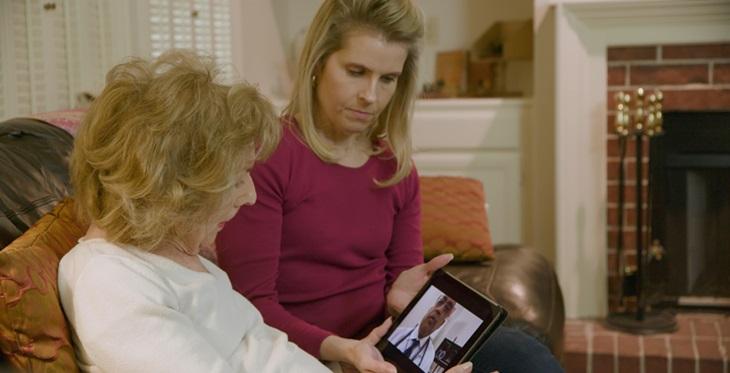
As a geriatrician, I serve as a primary care physician for older adults. In my practice, there are patients across the continuum of medical complexity with all levels of physical and cognitive functioning. A universal theme I see in practice is that it’s hard to keep up with health, healthcare, and health insurance plans. It can be challenging for my patients to come into the office for an in-person visit. They may have to drive a long distance, their medical appointment may interfere with their routine, such as a weekly exercise class, or if they have limited mobility, leaving the house is a feat and getting into the clinic can be quite burdensome.
Of course, when necessary, my patients are eager to come into the clinic. It is not uncommon, however, for me to see a patient in-person to follow-up on a newly prescribed medication, see how they are feeling on this new medication , and, if doing well, continue with the plan. This 15-minute office visit is easy for me. But for my patient this 15-minute visit often means their adult child taking a day from work (with or without pay) to come to their home at 6:30 a.m. to wake them and help them get ready. My patient may also need to take their medicines earlier than typically scheduled, rush off into morning commuter traffic, and, in the chaos, forget to put in their hearing aids. Once they arrive at the clinic and pull up to the curb, the struggles continue. Their adult child wrestles out the walker, flips on the hazards to help their parent walk into the clinic and to the front desk. After getting their parent settled into the waiting room, they run back to the car, park in the clinic garage, and walk back to clinic quickly, hopefully before the appointment starts, because, without her hearing aids, the older adult patient will need a lot of help communicating with the clinical team.
If all goes well, the 15-minute visit with the doctor is over and they do it all in reverse. This is the story I see played out over and over again in my clinic. A brief conversation with me can be an entire days’ journey for my patient and their care aid. This scenario is an example where telehealth , when done well, can be a valuable tool to have the same discussion for medical appointments, in an environment that is less burdensome for my patient and their family member.
Telehealth can serve as a tool to increase access to care, allowing patients to connect directly with their care team to discuss urgent or chronic issues. However, when not done well, telehealth can increase barriers to care and further limit access, especially in rural communities and communities with limited or no local access to care. Determining how and when to best utilize telehealth is an important piece of healthcare. In collaboration with the University of Virginia Geriatrics, West Health Institute, and the Mid-Atlantic Telehealth Resource Center, we created the Collaborative for Telehealth and Aging (C4TA) as the voice of national experts and leaders in developing these systems for the care for older adults.
The C4TA has put forth three principles that are essential for telehealth programs to be age-inclusive. Specifically, age friendly telehealth programs must be patient centered; integrated and coordinated; and improve equity and accessibility of healthcare. From this work, the online portal Center of Excellence for Telehealth and Aging (CE4TA) was created to serve as a hub of resources focused on creating age-inclusive telehealth programs. The goal of the Collaborative and the Center is to provide resources and tools that programs and institutions around the U.S. can use to optimize telehealth programs for the care of their older adult patients.
Patients and their caregivers can work with their clinical team to see if telehealth could be a good option for some of their medical visits. Telehealth visits should provide the same accommodations as in-person visits to ensure good communication (e.g., screen reader, closed captioning, or translator). CE4TA provides tools to prepare patients and clinicians for telehealth visits.
CE4TA has specifically highlighted two programs for their effectiveness of age-inclusive telehealth; these programs are Geisinger At Home Program and the SCAN Health Plan Insights Program and Technology, Education, and Coaching (TEC) Program. These real-world insights offer innovative solutions to help patients, clinicians, clinics, and organizations in optimizing telehealth systems to serve as a reliable tool in the care of older adults. For more information on age-inclusive telehealth, visit CE4TA.


